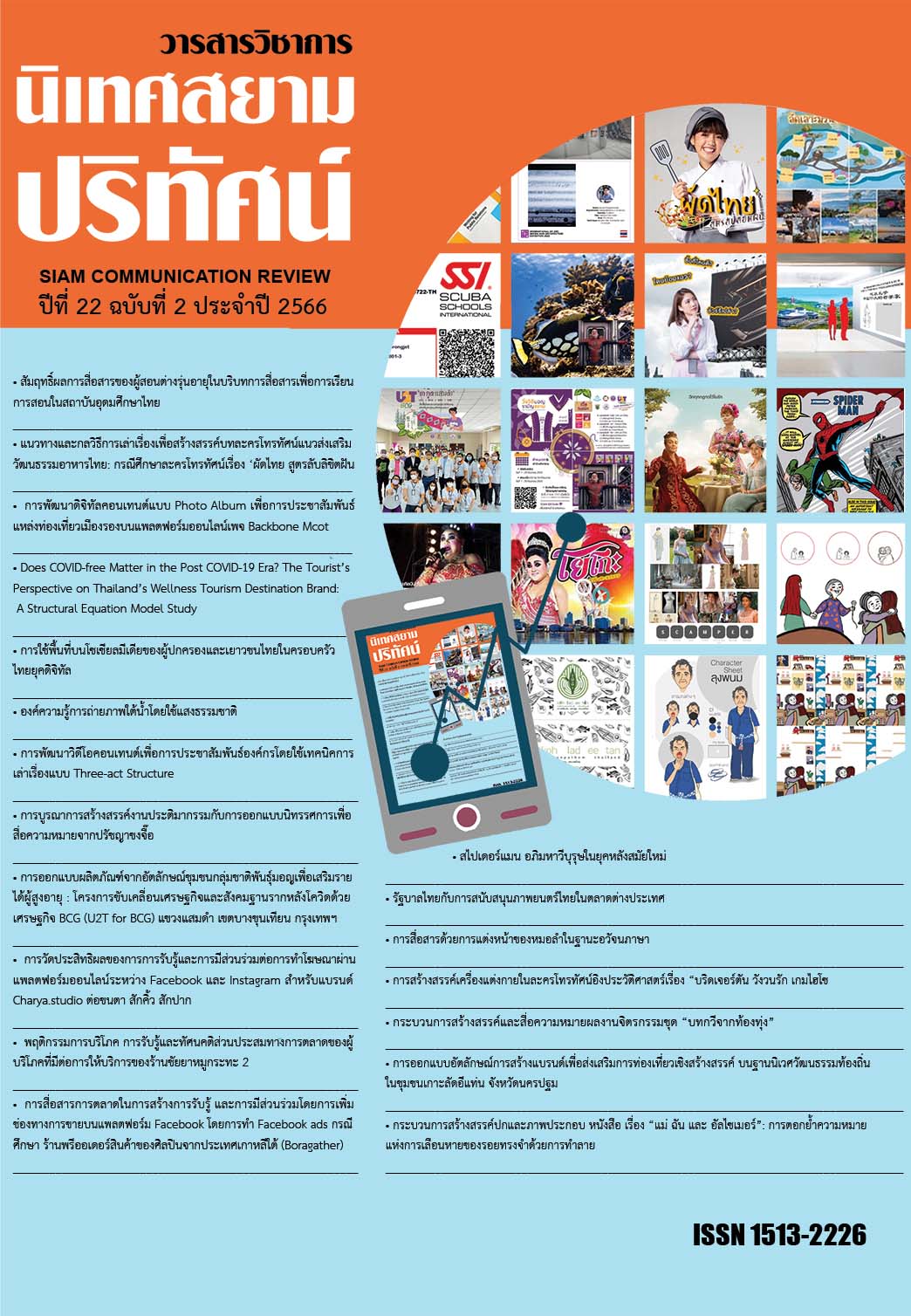The use of social media spaces by Thai teenagers and parents in the digital era
Main Article Content
Abstract
This Academic article presents Knowledge form the Co-Loving Space project, a research initiative financially supported by the Thai Media Fund to create awareness and understanding of the rights and freedoms of adolescents and families on social media. The objective of this article is to disseminate knowledge on the use of social media spaces among Thai adolescents and their families in the digital age. As social media increasingly plays a role in the relationships of family members in Thai society, the age gap, social media growth, media literacy, and social changes can cause conflicts in both the personal and shared social media spaces of Thai family members.
The social media usage patterns of adolescents and their parents in Thai families could be classified into seven groups: 1) normal shared use, 2) normal shared use with adolescents’ screening system, 3) shared use under permission, 4) shared use under agreement, 5) shared use as a parallel of original platforms, 6) shared use as a secondary platform, and 7) no shared use.
The use of social media spaces among Thai families was found to be consistent with the relationship basis and strength of family members. However, mutual understanding and empathic communication are basically required to minimize conflicts, address problems, and maintain healthy family relationships.
Article Details

This work is licensed under a Creative Commons Attribution-NonCommercial-NoDerivatives 4.0 International License.
References
กรกช แสนจิตร (2560). สื่อสังคมออนไลน์ (Social Media) ในฐานะเครื่องมือการสื่อสารในครอบครัวยุคดิจิทัล. การทำหน้าที่ในการสื่อสาร การเชื่อมโยงสายสัมพันธ์ และการสร้างความเข้าใจร่วมกัน (วิทยานิพนธ์ปริญญาดุษฎีบัณฑิต).สถาบันบัณฑิตพัฒนบริหารศาสตร์. กรุงเทพมหานคร
กรกช แสนจิตร และณัฐพงค์ แย้มเจริญ (2566). Co Loving Space : โครงการวิจัยเพื่อสร้างการตระหนักรู้ละเข้าใจในสิทธิเสรีภาพบนพื้นที่โซเซียลมีเดียของเยาวชนและครอบครัว. (รายงานการวิจัย). กรุงเทพมหานคร : กองทุนพัฒนาสื่อปลอดภัยและสร้างสรรค์
กุลทิพย์ ศาสตระรุจิ และภูเบศร์ สมุทรจักร (2560). การใช้สื่อสังคมเพื่อเสริมสร้างความสัมพันธ์ระหว่างสมาชิกครอบครัวในสภาวะความเปราะปรางของครอบครัว. (รายงานการวิจัย). กรุงเทพมหานคร : กองทุนพัฒนาสื่อปลอดภัยและสร้างสรรค์
กุลทิพย์ ศาสตระรุจิ และภูเบศร์ สมุทรจักร (2563). สื่อสังคมกับครอบครัวไทย. กรุงเทพมหานคร : สำนักพิมพ์จุฬาลงกรณ์มหาวิทยาลัย
นาจรีย์ ชยะบุตร.(2564). ปัญหาทางกฎหมายในการคุ้มครองสิทธิเด็กจากการถูกถ่ายภาพลงสื่อออนไลน์ .วารสารการเมืองการปกครอง. 11(2), 233
พรรณทิพย์ ศิริวรรณบุศย์.(2545). จิตวิทยาครอบครัว. กรุงเทพมหานคร : สำนักพิมพ์แห่งจุฬาลงกรณ์มหาวิทยาลัย.
ภาษาอังกฤษ
Prensky.M. (2001). Digital natives.digital immigrants part 1. On the horizon. 9(5). 1-6. Yen.J.Chen.C., Chen, H., & Ko
ระบบออนไลน์”
Amnesty International Thailand (ม.ป.ป.). เสรีภาพในการแสดงออก. เข้าถึงได้จาก https://www.amnesty.or.th/our-work/freedom-expression/
Infoquest.(2566). เฟซบุ๊กและไลน์นั่งแท่นสื่อโซเชียลมีเดียยอดนิยม. เข้าถึงได้จาก https://www.infoquest.co.th/thailand-media-landscape-2023/social-media
O.T.K.(2566). คนไทยเข้าเว็บอะไรมากที่สุด? เช็คสถิติการใช้สื่อดิจิทัล อินเทอร์เน็ต ของคนไทย ปี 2023. เข้าถึงได้จาก https://droidsans.com/the-state-of-digita-in-thailand-in-2023/


